Spring’s triumphant arrival in Paris is evident not only by the tulips blooming in the Tuileries but also by the brocantes popping up all over the city. Brocantes are temporary, pop-up flea markets. The dealers are like a band of gypsies who rove the brocante circuit from one neighborhood to another, week after week. They load up their cars or vans with secondhand goods, which they have procured from flea markets, auctions, estate sales, or a hoarder’s attic.
The thrill of a brocante is in discovering the unexpected. The French call it “la chasse au trésor.” And the first thrilling discovery might be stumbling upon the brocante itself.
The sudden appearance of neighborhood brocantes seems random, almost magical, and that’s part of their charm. In fact, the city controls the scheduling well in advance. The most visible tip-off is a bright yellow banner that hangs over the streets announcing an upcoming brocante. The banners appear about a week or ten days before the brocante opens. For those who like to plan ahead, I recommend that you check the listing provided by the city of Paris on their website.
When I last visited Montmartre, it was with the intention of going to see which fabrics might entice me at Le Marché Saint-Pierre. I climbed the stairs from the Métro and, as soon as I reached street level, I encountered more than the usual hustle and bustle. Mannequins and woven carpets were on the sidewalks. Visitors in this neighborhood usually peer up at the gleaming dome of Montmartre’s famous church Sacré Coeur, but this day most gazes were trained lower, alighting on the rusted and worn–secular treasures at eye level.
Treasures or trash? Well, that’s a matter of individual opinion and fancy – and memory. Several items reminded me of my childhood. For example, an Utz potato chip tin. An Amish-style blanket with interlocking hexagons in peach and blue pastels. Where did these items come from? Sellers are occasionally willing to disclose, but just as often that’s their trade secret and not to be disclosed. In my opinion, it doesn’t matter. Knowing that the current provenance is a sidewalk in Paris is good enough for me.
There are a few high-end brocantes. Here, for example, is a 2019 listing of Beaux Salons des Antiquaires-Foires Antiquités-Brocantes.
Some brocante dealers specialize in types of items–artwork, furniture, enamelware, silver cutlery, vintage jewelry or clothing. This, in part, distinguishes brocantes from vide-greniers (attic-emptiers), which are like yard sales where individuals come to unload a motley assortment of items they no longer use or want. Brocante dealers, by contrast, are usually professionals at their trade. But you should still expect to see a wide range of quality, condition, and pricing.
Some tips and words of caution: Brocante dealers generally don’t appreciate anyone taking photos. Be respectful and don’t take photos without asking permission. Bartering is okay, but handle the negotiation with great courtesy. Don’t start off too low if you want to be taken seriously. Walking away with indifference can sometimes re-engage the seller to propose a counteroffer. My typical approach in France (because it varies by culture) is to ask for a 30% reduction, and close the deal at about 10-25% less than asking price.
Many of the sellers are as fascinating to observe as their displays. This is especially true at the smaller neighborhood brocantes. Roughly equal numbers of men and women, their faces are etched with lines of hard-scrabble living. Some don’t seem particularly interested in making a sale. They might be there mostly to enjoy the outdoors and hang out with friends. At the Montmartre brocante that I mentioned earlier, a seller unfurled a cloth at lunch time, carefully positioned it atop a mahogany table that she he had brought to sell, and unloaded from her purse a lunch for herself and a vendor friend to share. The friend contributed a flask to the table, and they poured red wine into crystal goblets–also for sale. Like so much else in France–and certainly at the markets–the brocantes are not just about completing transactions but also savoring the experience: Being outdoors, enjoying friendship, trading gossip, sharing food, and warming up with a swig of wine. If an item happens so sell, so much the better.
Learn about upcoming brocantes:
http://quefaire.paris.fr/brocantes
http://www.info-brocantes.com/
https://vide-greniers.org/75-Paris
Or pick up a copy of the magazine Antiquités Brocantes (easy to find in Paris) for a listing of antique fairs and brocantes.
Related Links:
[Video] 10 Tips for Shopping at Flea & Antiques Markets
Antiques Fair in L’Isle-sur-la-Sorgue, Provence
How to Prepare for Any Flea Market Like a Pro
Best Flea Markets in Paris
Springtime in Paris
Foire de Chatou (formerly Fête du Jambon)

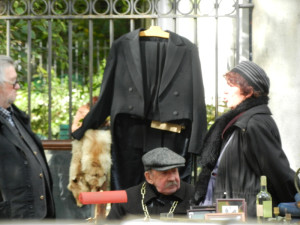

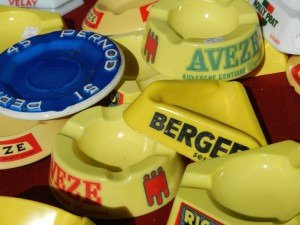
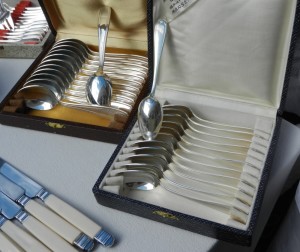
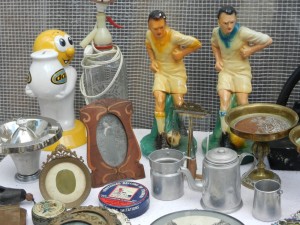
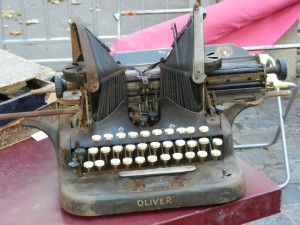
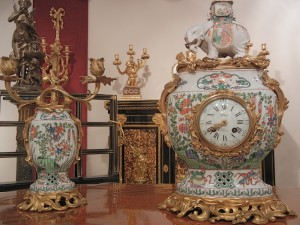


2 comments. Leave new
Do you know when and where the former antiques show that used to be in the Bastille quarter is being held, I believe around November 8th 2018. I hear it has moved to the chateau du Vincennes. Is this correct? Thank You!
Gail, Palm Beach, Florida
That’s correct. The Salon Antiquités Brocante, which was formerly held at place de la Bastille, is taking place at Château de Vincennes from Nov. 8-18, 2018. For more details, visit http://joel-garcia-organisation.com/2018/09/04/antiquite-vincennes-novembre-2018.